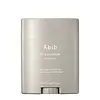What's inside
What's inside
 Key Ingredients
Key Ingredients

 Benefits
Benefits

 Concerns
Concerns

 Ingredients Side-by-side
Ingredients Side-by-side

Caprylic/Capric/Succinic Triglyceride
EmollientVinyl Dimethicone/Methicone Silsesquioxane Crosspolymer
Synthetic Wax
AbrasiveOctocrylene
UV AbsorberSilica
AbrasiveEthylhexyl Methoxycinnamate
UV AbsorberC12-15 Alkyl Benzoate
AntimicrobialDiethylamino Hydroxybenzoyl Hexyl Benzoate
UV FilterEthylhexyl Salicylate
UV AbsorberDiethylhexyl Carbonate
EmollientPhenyl Trimethicone
Skin ConditioningPolyisobutene
Bis-Ethylhexyloxyphenol Methoxyphenyl Triazine
Skin ConditioningMicrocrystalline Wax
Emulsion Stabilising1,2-Hexanediol
Skin ConditioningSorbitan Sesquioleate
EmulsifyingCaprylic/Capric Glycerides
EmollientParfum
MaskingCetyl Alcohol
EmollientAnthemis Nobilis Flower Water
MaskingButylene Glycol
HumectantWater
Skin ConditioningLavandula Angustifolia Flower Extract
CleansingMelissa Officinalis Leaf Extract
Skin ConditioningRosmarinus Officinalis Leaf Extract
AntimicrobialOriganum Majorana Leaf Extract
AntiseborrhoeicChamomilla Recutita Flower Extract
MaskingSalvia Officinalis Leaf Extract
CleansingThymus Vulgaris Leaf Extract
Skin ProtectingNiacinamide
SmoothingCalluna Vulgaris Extract
Skin ConditioningPotentilla Anserina Extract
Skin ConditioningSilybum Marianum Extract
Skin ConditioningEthylhexylglycerin
Skin ConditioningCaprylic/Capric/Succinic Triglyceride, Vinyl Dimethicone/Methicone Silsesquioxane Crosspolymer, Synthetic Wax, Octocrylene, Silica, Ethylhexyl Methoxycinnamate, C12-15 Alkyl Benzoate, Diethylamino Hydroxybenzoyl Hexyl Benzoate, Ethylhexyl Salicylate, Diethylhexyl Carbonate, Phenyl Trimethicone, Polyisobutene, Bis-Ethylhexyloxyphenol Methoxyphenyl Triazine, Microcrystalline Wax, 1,2-Hexanediol, Sorbitan Sesquioleate, Caprylic/Capric Glycerides, Parfum, Cetyl Alcohol, Anthemis Nobilis Flower Water, Butylene Glycol, Water, Lavandula Angustifolia Flower Extract, Melissa Officinalis Leaf Extract, Rosmarinus Officinalis Leaf Extract, Origanum Majorana Leaf Extract, Chamomilla Recutita Flower Extract, Salvia Officinalis Leaf Extract, Thymus Vulgaris Leaf Extract, Niacinamide, Calluna Vulgaris Extract, Potentilla Anserina Extract, Silybum Marianum Extract, Ethylhexylglycerin
Dimethicone
EmollientSynthetic Wax
AbrasiveHomosalate
Skin ConditioningSilica
AbrasiveIsoeicosane
EmollientOctocrylene
UV AbsorberPhenylpropyldimethylsiloxysilicate
EmollientEthylhexyl Salicylate
UV AbsorberIsopropyl Palmitate
EmollientDiisostearyl Malate
EmollientButyloctyl Salicylate
Skin ConditioningIsononyl Isononanoate
EmollientButyl Methoxydibenzoylmethane
UV AbsorberPhenethyl Benzoate
EmollientDiethylhexyl Carbonate
EmollientSynthetic Fluorphlogopite
Hydrogenated Vegetable Oil
EmollientPolyethylene
AbrasiveBis-Behenyl/Isostearyl/Phytosteryl Dimer Dilinoleyl Dimer Dilinoleate
EmollientDimethicone/Vinyl Dimethicone Crosspolymer
Skin ConditioningEthylene/Propylene Copolymer
AbrasiveCamellia Japonica Seed Oil
EmollientSilica Dimethyl Silylate
EmollientDimethicone Crosspolymer
Emulsion StabilisingEuphorbia Cerifera Wax
Vinyl Dimethicone/Methicone Silsesquioxane Crosspolymer
Copernicia Cerifera Wax
Lecithin
EmollientPentaerythrityl Tetra-Di-T-Butyl Hydroxyhydrocinnamate
AntioxidantAllantoin
Skin ConditioningEctoin
Skin ConditioningHelianthus Annuus Seed Oil Unsaponifiables
EmollientDimethicone, Synthetic Wax, Homosalate, Silica, Isoeicosane, Octocrylene, Phenylpropyldimethylsiloxysilicate, Ethylhexyl Salicylate, Isopropyl Palmitate, Diisostearyl Malate, Butyloctyl Salicylate, Isononyl Isononanoate, Butyl Methoxydibenzoylmethane, Phenethyl Benzoate, Diethylhexyl Carbonate, Synthetic Fluorphlogopite, Hydrogenated Vegetable Oil, Polyethylene, Bis-Behenyl/Isostearyl/Phytosteryl Dimer Dilinoleyl Dimer Dilinoleate, Dimethicone/Vinyl Dimethicone Crosspolymer, Ethylene/Propylene Copolymer, Camellia Japonica Seed Oil, Silica Dimethyl Silylate, Dimethicone Crosspolymer, Euphorbia Cerifera Wax, Vinyl Dimethicone/Methicone Silsesquioxane Crosspolymer, Copernicia Cerifera Wax, Lecithin, Pentaerythrityl Tetra-Di-T-Butyl Hydroxyhydrocinnamate, Allantoin, Ectoin, Helianthus Annuus Seed Oil Unsaponifiables
 Reviews
Reviews

Ingredients Explained
These ingredients are found in both products.
Ingredients higher up in an ingredient list are typically present in a larger amount.
This ingredient is a light oil and multi-tasking emollient.
As an emollient, it helps soften skin by preventing moisture from leaving.
Due to its low viscosity, it is able to help products be more easily spread. It also has great solvency and is especially useful at dissolving crystalline actives.
Learn more about Diethylhexyl CarbonateEthylhexyl Salicylate is an organic compound used to block UV rays. It primarily absorbs UVB rays but offers a small amount of UVA protection as well.
Commonly found in sunscreens, Ethylhexyl Salicylate is created from salicylic acid and 2-ethylhexanol. You might know salicylic acid as the effective acne fighter ingredient and BHA.
The ethylhexanol in this ingredient is a fatty alcohol and helps hydrate your skin, similar to oils. It is an emollient, which means it traps moisture into the skin.
According to manufacturers, Ethylhexyl Salicylate absorbs UV wavelength of 295-315 nm, with a peak absorption at 307-310 nm. UVA rays are linked to long term skin damage, such as hyperpigmentation. UVB rays emit more energy and are capable of damaging our DNA. UVB rays cause sunburn.
Learn more about Ethylhexyl SalicylateOctocrylene protects skin from sun damage. It absorbs UV-B with peak absorption of 304 nm. It is a common sunscreen ingredient and often paired with avobenzone, a UVA filter. This is because octocrylene stabilizes other sunscreen ingredients by protecting them from degradation when exposed to sunlight. Octocrylene is a photostable ingredient and loses about 10% of SPF in 95 minutes.
Octocrylene also acts as an emollient, meaning it helps skin retain moisture and softens skin. It is oil-soluble and hydrophobic, enhancing water-resistant properties in a product.
Those who are using ketoprofen, a topical anti-inflammatory drug, may experience an allergic reaction when using octocrylene. It is best to speak with a healthcare professional about using sunscreens with octocrylene.
The EU allows a maximum of these concentrations:
Learn more about OctocryleneSilica, also known as silicon dioxide, is a naturally occurring mineral. It is used as a fine, spherical, and porous powder in cosmetics.
Though it has exfoliant properties, the function of silica varies depending on the product.
The unique structure of silica enhances the spreadability and adds smoothness, making it a great texture enhancer.
It is also used as an active carrier, emulsifier, and mattifier due to its ability to absorb excess oil.
In some products, tiny microneedles called spicules are made from silica or hydrolyzed sponge. When you rub them in, they lightly polish away dead skin layers and enhance the penetration of active ingredients.
Learn more about SilicaSynthetic Wax is created from fossil fuels such as natural gas. It is used to enhance texture, adjust pH, and as an occlusive.
It may also be used as an abrasive ingredient to exfoliate the skin.
Synthetic Wax may not be fungal acne safe.
Learn more about Synthetic WaxThis ingredient is used in makeup and skincare to thicken formulas, reduce shine, and give skin a silky-smooth feel.
It’s a white silicone powder that sits in fine lines and pores to blur their appearance though its effectiveness depends on the particle size.
You'll typically find this ingredient in amounts between 0.1-20%.
Learn more about Vinyl Dimethicone/Methicone Silsesquioxane Crosspolymer